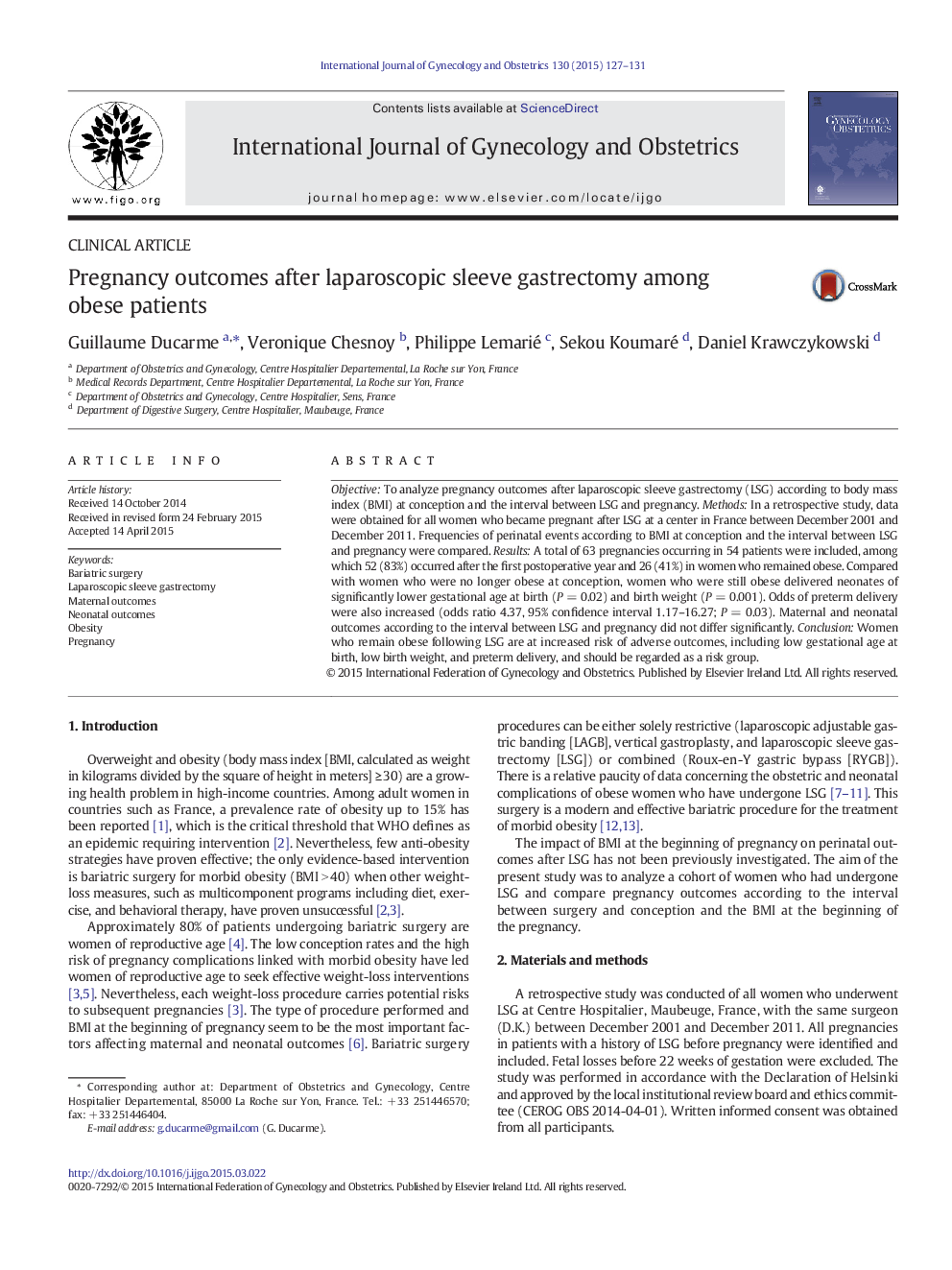| Article ID | Journal | Published Year | Pages | File Type |
|---|---|---|---|---|
| 3954087 | International Journal of Gynecology & Obstetrics | 2015 | 5 Pages |
ObjectiveTo analyze pregnancy outcomes after laparoscopic sleeve gastrectomy (LSG) according to body mass index (BMI) at conception and the interval between LSG and pregnancy.MethodsIn a retrospective study, data were obtained for all women who became pregnant after LSG at a center in France between December 2001 and December 2011. Frequencies of perinatal events according to BMI at conception and the interval between LSG and pregnancy were compared.ResultsA total of 63 pregnancies occurring in 54 patients were included, among which 52 (83%) occurred after the first postoperative year and 26 (41%) in women who remained obese. Compared with women who were no longer obese at conception, women who were still obese delivered neonates of significantly lower gestational age at birth (P = 0.02) and birth weight (P = 0.001). Odds of preterm delivery were also increased (odds ratio 4.37, 95% confidence interval 1.17–16.27; P = 0.03). Maternal and neonatal outcomes according to the interval between LSG and pregnancy did not differ significantly.ConclusionWomen who remain obese following LSG are at increased risk of adverse outcomes, including low gestational age at birth, low birth weight, and preterm delivery, and should be regarded as a risk group.
